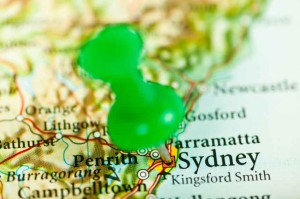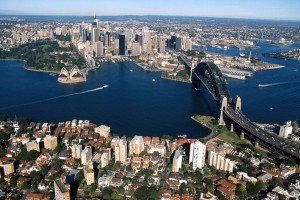In his column for Switzer, John McGrath discusses how apartment developments have changed over the last 30 years.
For the first time ever on record (since 1984), we’ve seen more new apartments completed than houses in Australia. 
The latest Building Activity report from the Australian Bureau of Statistics shows 28,102 new houses and 28,527 new apartments and townhouses were completed in the December 2016 quarter.
We’ve had a major construction boom on the East Coast of Australia in recent years.
Construction activity is still very strong in NSW, where new starts and the number of apartments under construction continues to trend higher.
However, in Victoria and Queensland it is starting to decline, according to CoreLogic.
The construction boom was brought on largely by strong market conditions in Sydney and Melbourne, a national undersupply of housing, population growth and the rising popularity of apartment living, among other factors. 
The rise of apartment living has been one of the most important trends I have seen over my 30+ years in real estate.
While in many cases their simple affordability compared to houses is a factor, many people today would tell you they’d rather live in an apartment for the security and low-maintenance lifestyle.
One of the interesting things about apartment development these days is the changing nature of projects.
The apartment blocks of old were concrete towers with either no residents’ facilities or perhaps a small gym room and a kidney-shaped fibreglass pool out the back.
Things have changed.
Apartments are no longer the cheaper stepping stone to houses.
They’re long-term homes for many buyers who expect great design, comfort and amenities.
As modern life gets busier, buyers also want convenience and recreation where they live and apartments often fit the bill.
In recognition of this, developers are being far more imaginative in creating products that sell a lifestyle, not just a place to live.
Take the increasing number of master-planned communities, for example.
These are large estates usually with several apartment buildings and a mixture of communal facilities including gardens, barbecue areas, cafes, gymnasiums and aquatic centres.
Everything you need is on site, meaning great convenience but also a real sense of community, with residents able to socialise together in communal spaces.
Another strong trend is the development of apartments directly above shopping centres.
This is a very New York-style of residential living.
Apartments above centres usually have great views and a two-minute trip down the elevator delivers you to an array of shops, restaurants and transport. 
Cushman & Wakefield, one of the world’s biggest commercial real estate services firms, discusses the rise of residential/retail development in its Australian Retail Property Outlook 2017 report.
It describes mixed-use retail as “emerging as a major category in Australia’s retail landscape”.
The popularity of apartment living is providing a win-win opportunity for developers, retailers and buyers.
Many time-poor city dwellers love having supermarkets, shops, cafes and cinemas at their doorstep and retailers love the sizeable guaranteed patronage that ‘shop top’ housing provides.
Here are some examples of the main trends in the mixed retail/residential space.
1. Developers increasingly incorporating retail precincts into new developments
Meriton’s largest retail development to date is Mascot Central in Sydney, which combines 17 eateries, shops and a major Woolworths beneath four towers of around 800 residential apartments.
They’ve also recently launched the Sundale development on the Gold Coast, which is Southport’s tallest residential tower at 55 levels with 13 new shops beneath, including a Woolworths.
2. Re-development of existing shopping centres to include new residential apartments above
A great example is Top Ryde City Shopping Centre in Sydney’s northern districts. 
Top Ryde was once a modest two-level suburban shopping centre.
It was demolished in 2007 and a new centre was built with hundreds of shops and 653 apartments on top, many with views to the city or Blue Mountains.
Completed by Crown in 2014, the Top Ryde City Living development is now home to more than 600 residents.
Not only do they have access to fantastic common facilities including a music room, library, theatre, 25m infinity pool and a children’s playground, they also have direct access to a huge shopping centre with hundreds of retailers, an Event cinema and plenty of eateries just downstairs.
3. Shopping centre owners selling air space above existing shops to developers
Just recently, the owners of The Glen shopping centre in Melbourne’s Glen Waverley announced they had sold the residential air rights above the centre to a developer who will build 539 apartments as part of the centre’s redevelopment.
The new centre will have 240 shops and eateries.
4. Shopping centre owners developing apartments on top of existing shops
In Sydney’s Winston Hills, the owners of Winston Hills Mall are developing 86 apartments above their existing mall.
Called The Langdon, it is the first apartment complex ever for the suburb. 
Residents will have about 70 shops on their doorstep including Aldi, Big W, Coles and Woolworths.
I think we’ll see more mixed retail/residential development in the future.
We’ve got more people wanting to live in apartments, a greater desire for convenience and lifestyle, a lack of land and potentially, a growing interest among retail centre owners in diversifying into residential property.
With the shopfront retail industry battling online competition, it wouldn’t be surprising to see more centre owners converting commercial assets into mixed use developments.
Alternatively, they can sell the air space to developers who are desperate for opportunities given lack of land supply.

No comments:
Post a Comment